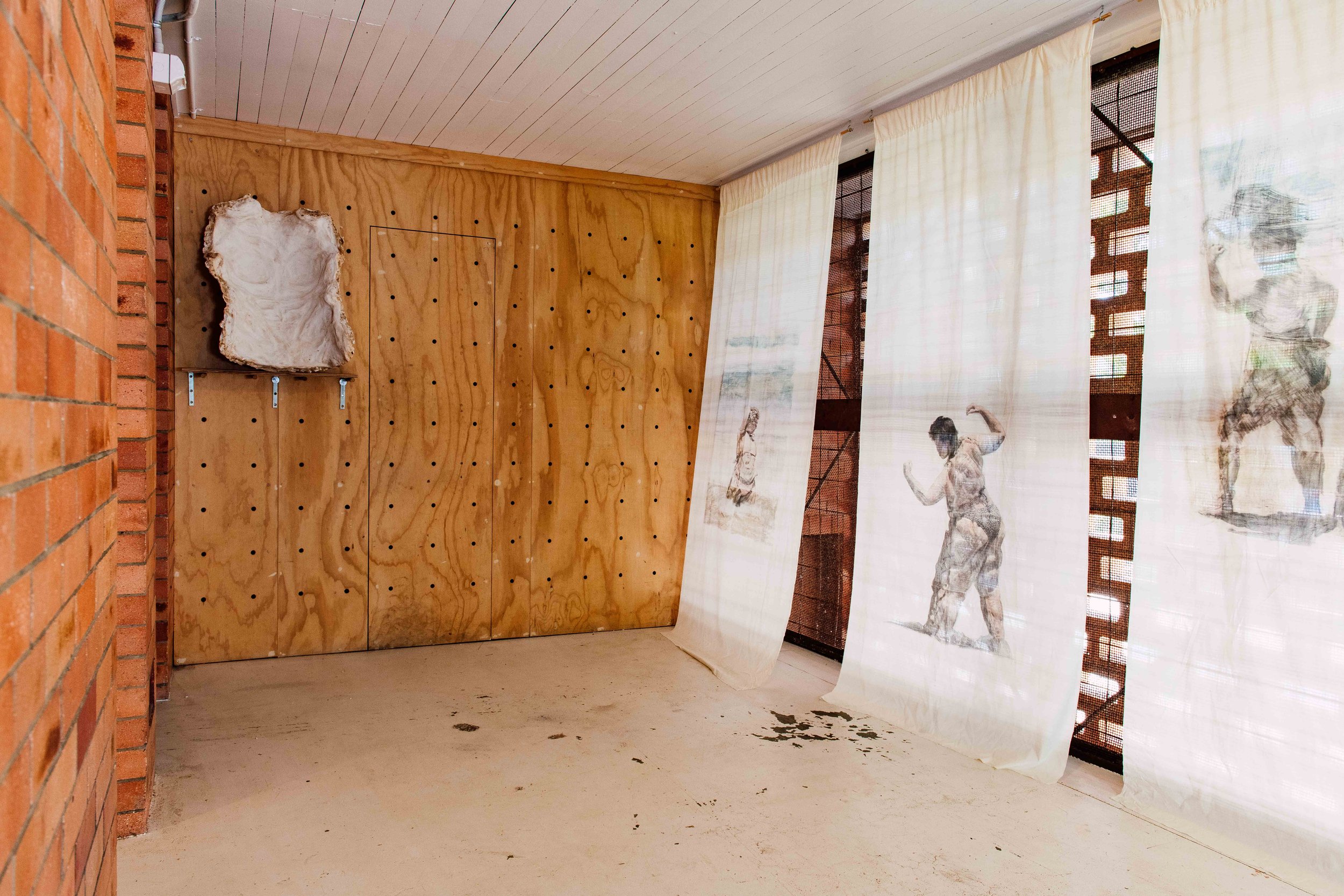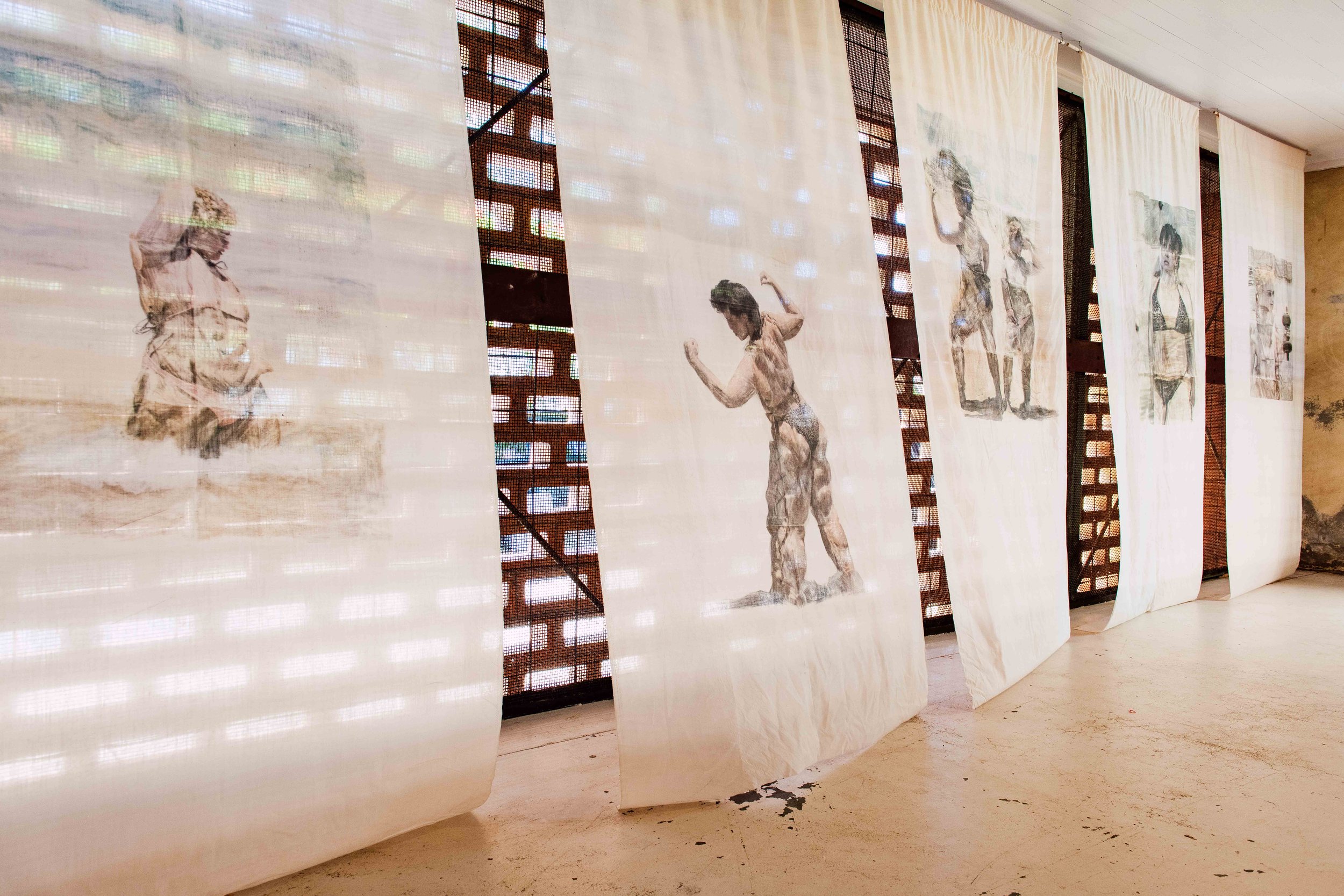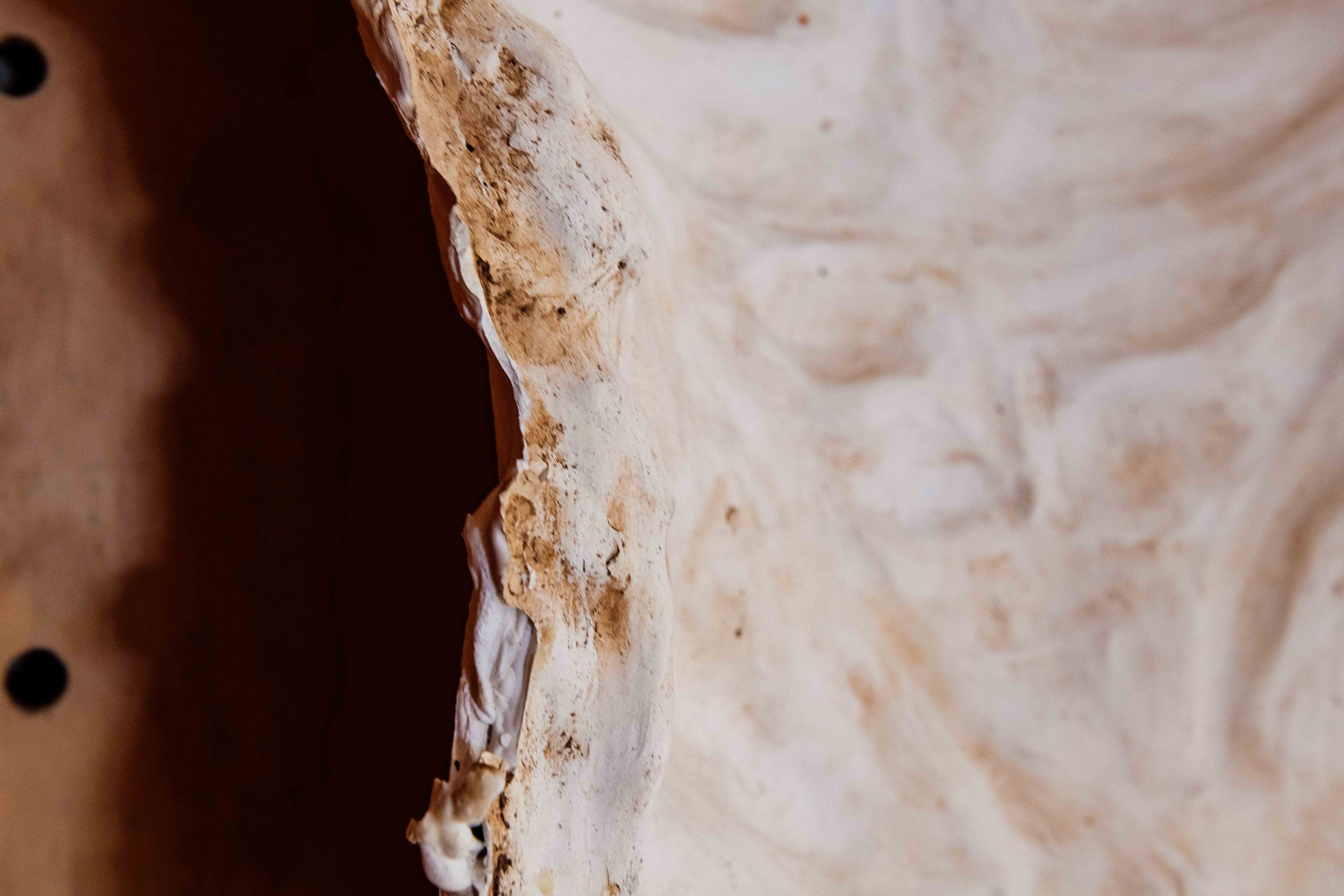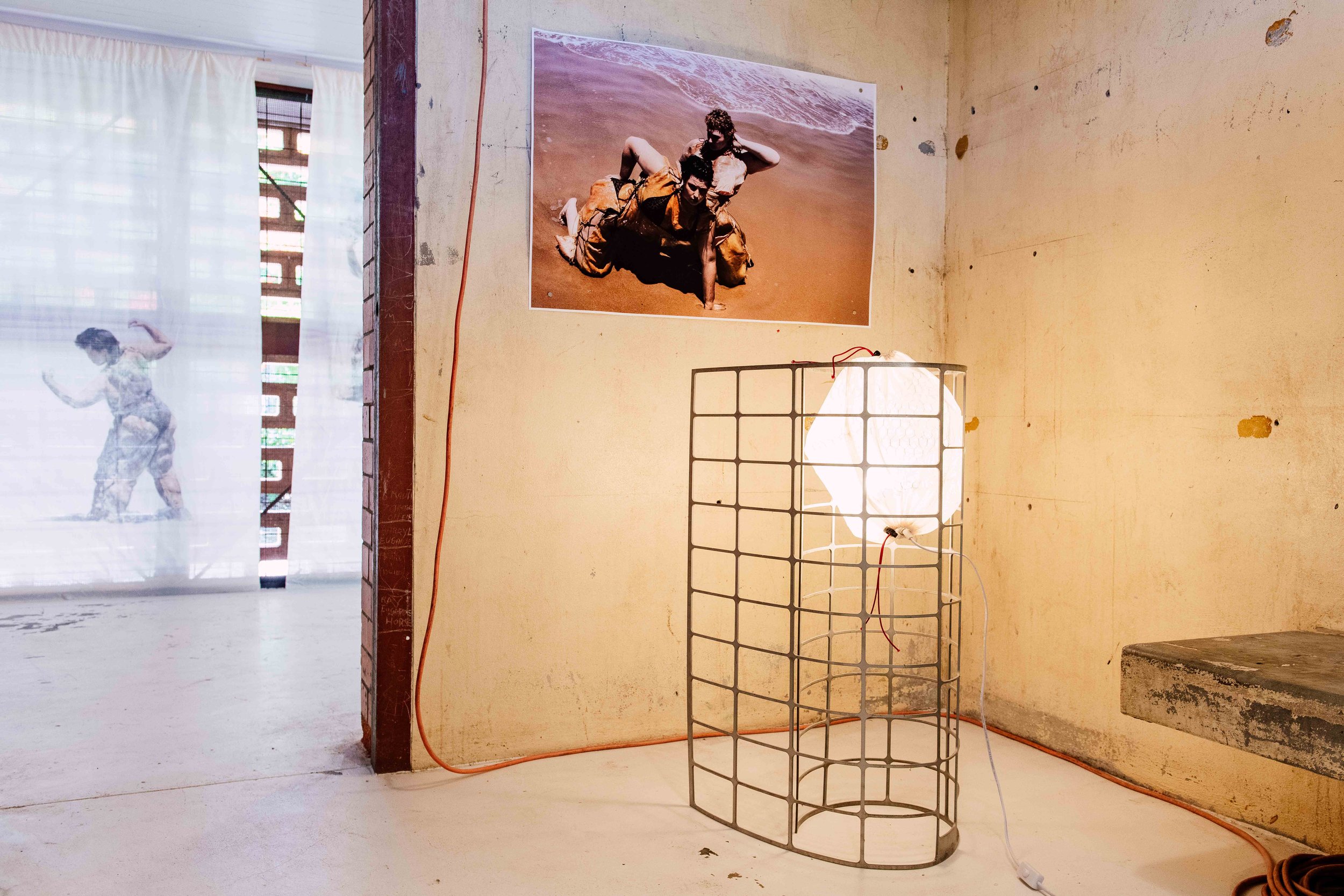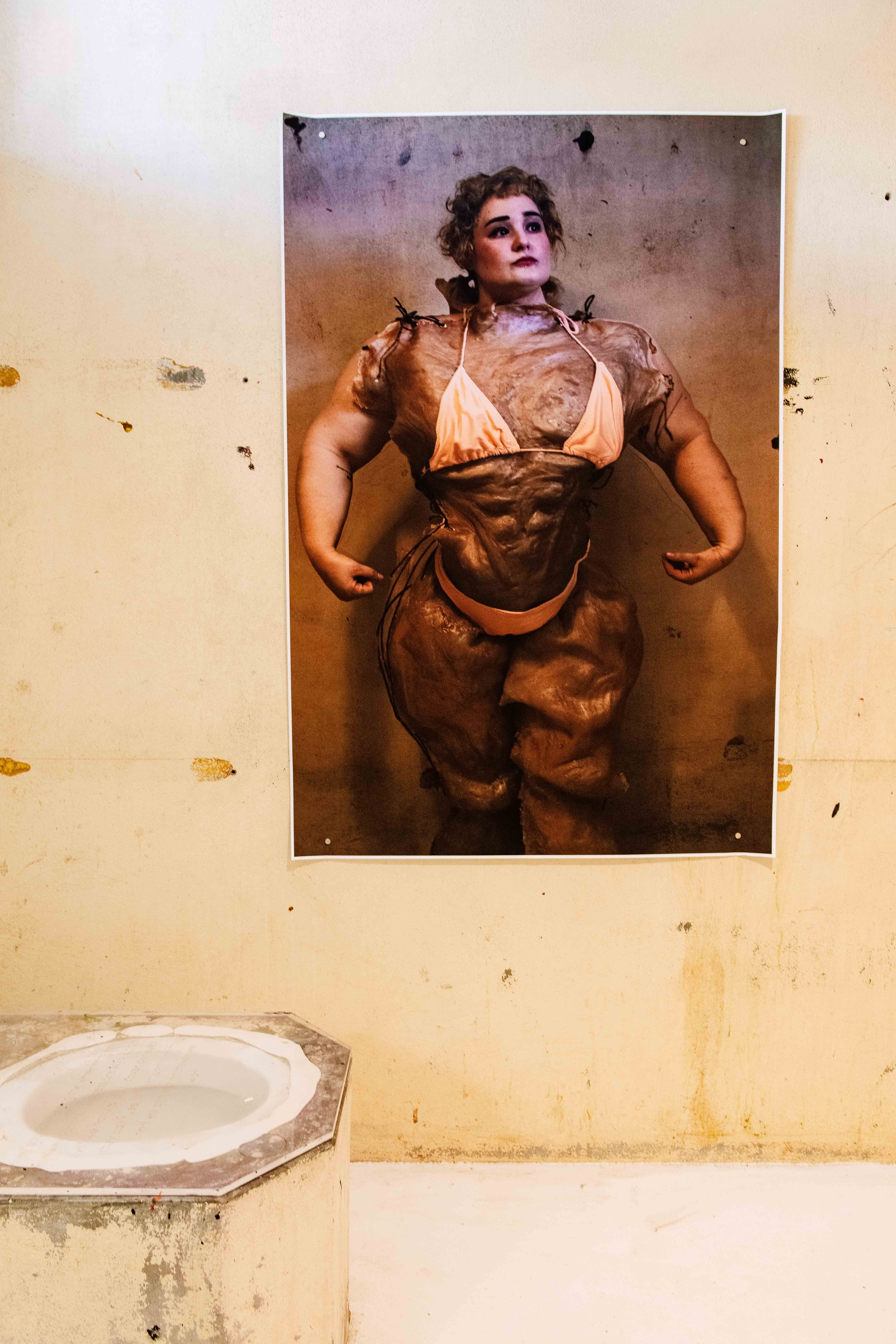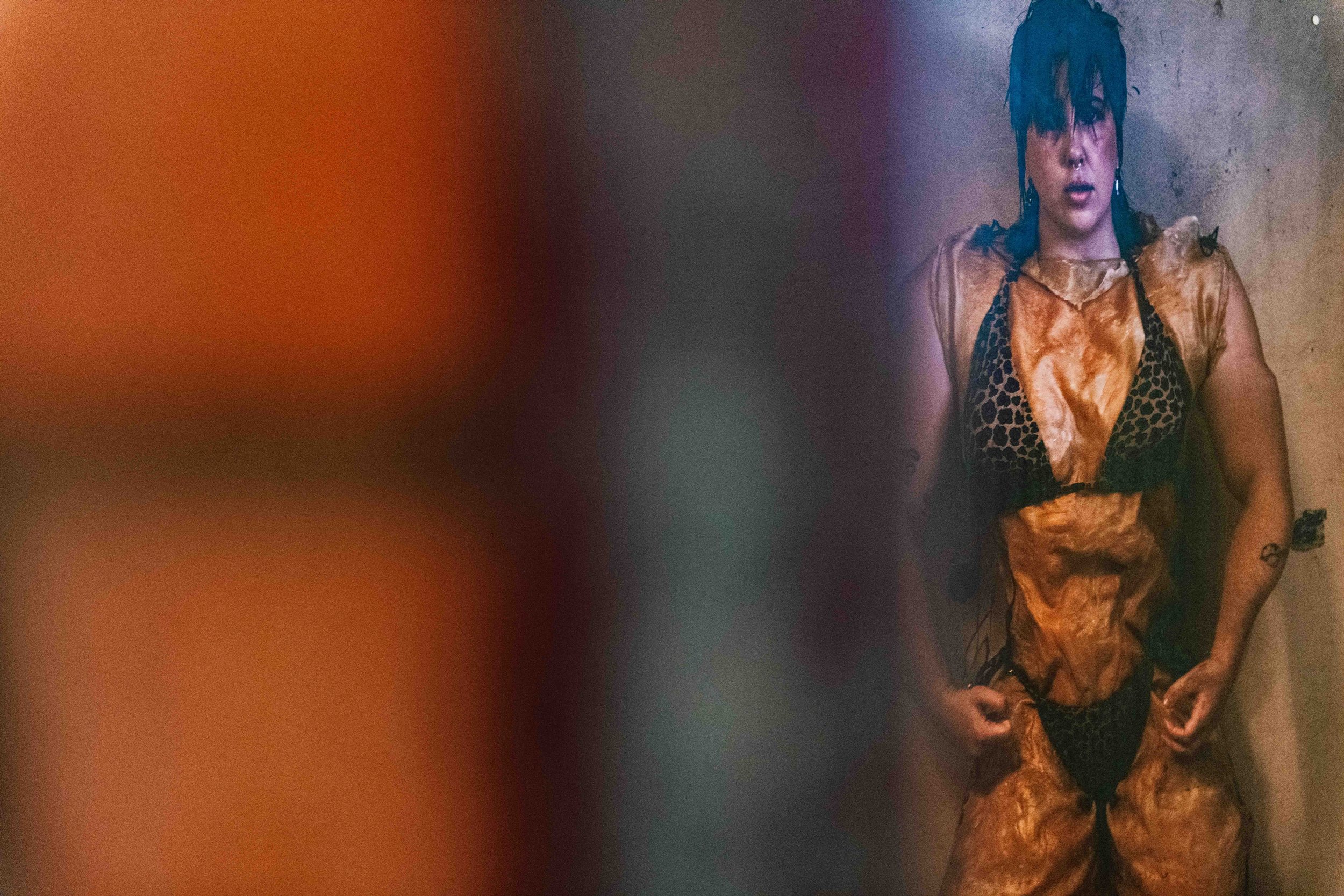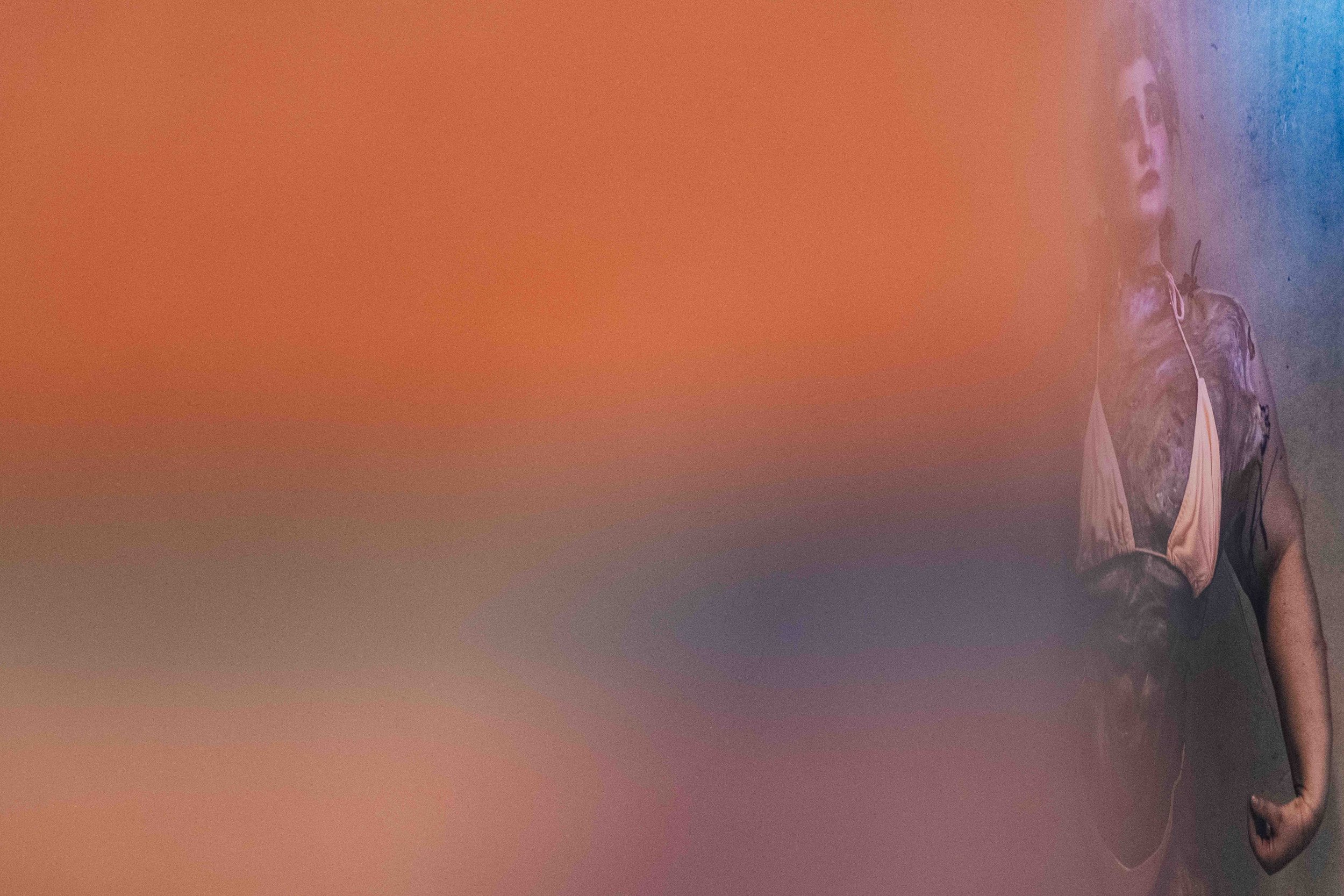BULKING | Emma Gow x Seren Wagstaff
December 2022 - February 2023
BULKING is a developmental exhibition from IN | artist-run initiative's latest Cellmate pairing, Emma Gow x Seren Wagstaff.
ABOUT CELLMATES
IN | artist run initiative will pair two artists together to undertake a collaborative residency. This pairing will be driven by the potentiality of either two divergent artistic practices and/or practices that share common languages, conceptual anchors or processes. The residency is designed for artists looking to expand the boundaries of their current practice and those interested in cross-fertilisation.
Emma Gow | @emma__gow
Emma Gow is a Meanjin-based artist who works across a wide range of media, including painting, video, object making and performance. Her work often engages with post-internet ideas relating to constructed narratives of self-hood. Emma's work explores the ways in which technology and image sharing have influenced how we construct our memories and identity.
Seren Wagstaff | @serentonin
Seren Wagstaff is a Meanjin-based artist hailing from Bundaberg. Her expanded practice is motivated by performance and how to represent and respond to the aftermath. Working across sculpture and performance, Seren investigates the outcomes of placing theatrical conventions in a fine art context. .
Sound | Joseph Botica | @josephcbotica
Words | Michael Louttit | @michael_louttit
Image credit: Warwick Gow
ACCOMPANING EXHIBITION ESSAY
Written by - Michael Louttit
In The Language Of The Body, Kathy Acker theorises an antagonism between bodybuilding and writing — one keenly felt by the artists and myself in discussing their work.1 Nevertheless, here I will make an attempt. When I think of bodybuilders, I think of lumpy lumpenproles unleashed upon the outer suburbs of Western Sydney, proto-Manosphere #masc4mascs fervently posting their exploits online. Passionate homosociality abounds. Perhaps bodybuilding is Drag Race for straight guys?
For men who came of age in the internet’s various unwashed armpits, the spectre of Zyzz looms large. As the virtual continues to colonise the real, we “alter ourselves and the world around us to match the perfection that we see onscreen”.2 For those of us who fall short of said perfection (many, I suspect), this is also accompanied by the spectres of lapsed diets, gym memberships unused, and their attendant black holes of shame. Transcending my personal masculine hangups however, the artists begin with the female bodybuilder as character. Rather than looking at any one individual, they ask what the archetypical, larger than life female bodybuilder represents. Completely bypassing androgyny (which here somehow implies neuter), she accelerates and expands, her gender in superposition at both extremes of masculinity and femininity. In her, the absurdity of the gender binary is shown up without any overt discourse. She is simultaneously hyper feminine and hyper masculine, yet still enforces binary stereotypes of gender.
The women who seek these coinciding extremes (despite broader society’s rejection of their desirability) tend to be met with confused reactions in the style of “it’s too much”, “she looks like a man”, and general disgust otherwise. Likewise, tropes of the imprisoned bodybuilder are plentiful, whether they’re getting ripped in prison along the very fictional hero’s journey, or in very real imprisonment for selling steroids (incidentally, news of Zyzz’s sudden and untimely death broke while his brother, Chestbrah, was doing time for selling steroids). Mainstream audiences are content to be entertained by Orange Is The New Black’s masculinised women, safe behind the fourth wall, yet will readily look down on incarcerated and masculinised women in real life.
The artists channelled the masculinised female bodybuilder through an additive process — one of literal body building, akin to athletic metaphors and movie montages of self- sculpting. This process resulted in “freedom suits” which recall the latexes of Eva Hesse or Hannah Wilke, except given literal (as opposed to metaphoric) bodily depth. In these suits they could reclaim the beach (not in a Cronulla way, in a Reclaim The Night way) — the beach perhaps being the public space in which the male gaze is felt most intensely. Taking her energy to the streets and beaches of the Sunshine Coast was a pushback against this gaze, and a little experiment to see how the perception of their big bodies and aggressive personas would change in this setting. This would of course be a very different work if it were made by two thin women. It seems to me that in the popular imaginary, fat androgynises — and so fat people are denied the social ease afforded by a hegemonically masculine or feminine body. Thinking back on her experience of wearing the suit in public, Emma recalled that “even though much of my body was exposed, I was not at all thinking about the way my body would be perceived. A freedom that I haven’t had since I was a young child.” Despite the gravity of these topics, I would be remiss to gloss over the humour in the work. The artists use it as a deflationary measure — to redirect, reclaim, disarm, to remove themselves from the running. To make space for themselves in places that feel unsafe. Something similar is happening with the female bodybuilder — she exposes the absurdity of the extremes of weaponised gender. She shines a light on all the farcicality of the posing male bodybuilder’s peak masculinity. In her competition bikini and stilettos, she seems like she is in on the joke. Men, meanwhile, are most of all afraid that women will laugh at them. When women ratfuck the male gaze — this is feared.3 Laughter kills the oppressor.4 In Acker’s statement that “Bodybuilding can be seen to be about nothing but failure”,1 cannot help but also read Jack Halberstam’s queer conception of failure. For Halberstam, “gender failure often means being relieved of the pressure to measure up to patriarchal ideals,” offering “unexpected pleasures”.5
This may be an oblique link, but as a recent article by Joshua Citarella argues, it is not the only one between (increasingly right wing) bodybuilding and (conventionally left wing) queerness.6 He argues that, for better or worse, proof today (for both the right and the left) is situated in the body — that is to say, the shredded physique of the right wing bodybuilder (RWBB) and the lived experience of the trans feminist. In response to hormonal threats, both conspiratorial (mass force-feminisation by “globalists”) and real (microplastics now in unborn babies and everything else, denial of access to gender affirming care), each group advocates for their own articulation of endocrine rights.7 We again see this shared fixation in RWBB jokes (as insensitive as they are revealing) about being “Cis+”, “male-to-male transgender” or “stealing the trans kid’s testosterone.” In the face of widespread downward mobility and impending ecological collapse, maybe both groups have more in common than they think. Either way, it is clear to me that it is crucial now to do as these works do — to contest the territory of the body, and of fitness culture in particular, lest its development as a right-wing pipeline for disenfranchised young men continue unabated, as it has since I was their age. “In our culture, we simultaneously fetishize and disdain the athlete, a worker in the body. For we still live under the sign of Descartes. This sign is also the sign of patriarchy. As long as we continue to regard the body, that which is subject to change, chance, and death, as disgusting and inimical, so long shall we continue to regard our own selves as dangerous others”.1
Words Michael Louttit
1 Kathy Acker, Against Ordinary Language: The Language Of The Body.
2. Jak Ritger, On Devirtualization.
3 ratfuck 1. (vulgar, transitive, intransitive) To steal or disorganize items that do not belong to one.
2. (vulgar) To sabotage; to fight dirty against or betray and cause disarray among.
4 Metahaven, Can Jokes Bring Down Governments?: Memes, Design and Politics.
5 Jack Halberstam, The Queer Art of Failure.
6 Joshua Citarella, Raw eggs, pink pills, and embodied identity: Online communities create their own proof in a
vacuum of truth.
7 Helen Hester, Xenofeminism.
ARTISTS
Emma Gow | IG @algal_bloom
Seren Wagstaff | IG @
Words | Michael Louttit
Sound | Joseph Botica | IG @fritzframes

